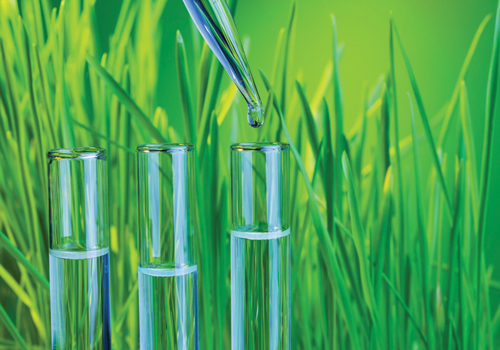In early February, consumers who bought herbal supplements in New York were left wondering, “Was that really St. John’s Wort in my bottle?” NY Attorney General (NYAG) Eric T. Schneiderman announced DNA testing of herbal supplements purchased at GNC, Target, Walmart and Walgreens, produced unfavorable results. The active herbs were not found in the tested products, and filler herbs were used in their place, the NYAG stated. Based on the results, he insisted through cease-and-desist letters that the tested herbal products be pulled from shelves.
But, it’s far from an open-and-shut case. Industry trade groups and GNC disagreed with the use of DNA barcoding to identify materials in finished herbal products (see the March Newslinks for more). In this supplier feature, analytical testing specialists will explain the best methods for testing herbal products, and why some believe Schneiderman’s team missed the mark with its testing.
The Methods Matter…A Lot!
The moral of the story from the Schneiderman debacle is that a poorly chosen method can produce unreliable results. “The wrong lab was used to deploy the wrong test methods and the wrong results were shared around the globe,” states Elan Sudberg, CEO of Alkemist Labs, Costa Mesa, CA. “It will take the dietary supplement industry much work to recover from this blunder and regain consumer confidence.”
Shabbir Akand, vice president of sales and marketing at NHK Laboratories, Santa Fe Springs, CA, calls the NYAG’s actions demagoguery. “GNC, Walmart, Target and Walgreens have a near ubiquitous footprint in Main Street America and their potential scandals are very newsworthy,” Akand believes. “The letters were designed to irrationally scare the consuming public with misleading headlines.”
Sudberg says finished products are complicated, and just one single method can’t be used for identity testing across the board. Several testing methods are available, each with unique capabilities and purposes. For this reason, Sudberg believes “a multidisciplinary approach is essential to provide the most accurate report.”
For instance, he suggests that extracts of finished product materials—be they liquid or powder—may require a combination of analytical techniques like high-performance liquid chromatography (HPLC) or high-performance thin-layer chromatography (HPTLC). “Both have their limitations, of course, however they have been time tested, governing body accepted (FDA, TGA, Health Canada and so on),” he states. “In the right hands, specifically trained technicians committed to accurate results, these methods give us the right information and can be relied upon.” These techniques can offer information about the presence or absence of recognized compounds, whether they’re pesticides or certain metabolites, for instance.
Jun Lin, Ph.D., quality control manager at NHK Labs, says HPTLC and TLC are useful for identifying botanical ingredients in a one test run. “Chemical assays such as HPLC are also good methods because they identify known marker compounds in botanical ingredients,” Lin says, and reiterates Sudberg’s point that “the best way to verify the identity of a finished product is to consider all of the product’s characteristics, not just rely on one method.”
Timing Is Everything
There’s also a big difference between the best methods used to test finished products and those used for raw materials. Before it is used in a formula, Sudberg says that DNA, microscopy and/or HPTLC and HPLC might be useful to identify botanicals. On the other hand, he believes only HPTLC and HPLC are acceptable once it’s extracted or highly processed in a finished product. During these processes, the original DNA of botanicals is often compromised, thereby creating unreliable results with DNA testing.
He adds that complex delivery forms like microencapsulated time-releasing pills within pills might require customized methods for analytical testing. “Method development involves finding the right method to fit the individual product being tested. It requires the development of a known method and applying it to that specific product where you know you have succeeded when you can repeatedly reproduce results with confidence and specificity,” he states.
So, Frank Jaksch, CEO of ChromaDex, Irvine, CA, sums up by saying one test method is not really appropriate for any and all testing across the board. “The DNA testing the NYAG did is a good case for this,” he states. “In some cases, the test may be valid for identity testing of raw herb powders, and in the case of certain herbal extracts, it might be inappropriate because the DNA is compromised.”
On the Horizon
With respect to where analytical testing is headed, most experts believe the tried-and-true analytical methods in use today works well and should continue to be at the forefront of analytical testing. Lin hopes the academic world and industry will continue to investigate ways to advance these technologies even further: “There’s always room for improvement.”
New methods must be tested thoroughly before joining the ranks. “The material point is that to get accurate results, you have to choose verified, accepted methods fit for that purpose,” states Sudberg. “If and when newer technologies get to the point of being verified and accepted by all relevant bodies, then and only then should they join the pantheon of tests we all rely on today.”
While Jaksch says DNA testing was a “poor choice” for the products in the NYAG study, it doesn’t mean that the method is without value. DNA identity testing of raw herb or botanical powders may be fast and helpful, for instance, and other applications are being tested. “The point here is DNA may work for raw herbs, where the DNA is intact,” he states.
Adds Lin, “The cost of DNA testing is dropping and it’s definitely a useful methodology. It’s just not the be-all and end-all of identity testing that the NYAG and press would like consumers to believe.” WF
See wholeofoodsmagazine.com/suppliers for more coverage of the Suppliers category.
Published in WholeFoods Magazine, April 2015










